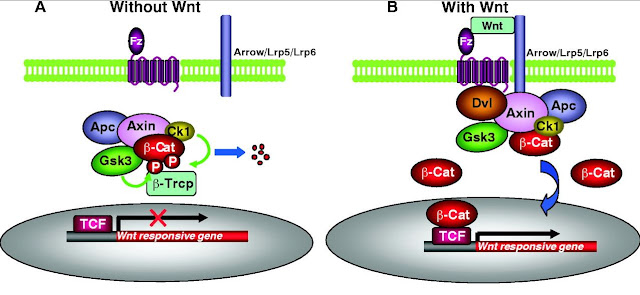Modulating Wnt Signaling in Autism and Cancer

Source: LDL receptor-related proteins 5 and 6 in Wnt/β-catenin signaling: Arrows point the way In earlier posts I have covered various signaling pathways such as Wnt, mTOR and the unusually sounding Hedgehog. You can go into huge detail if you want to understand these pathways, or just take a more superficial view. In most cases, things only start to go wrong if you are hypo/hyper (too little/too much) in these pathways. We saw with mTOR that most people with autism are likely to have too much activity and so might benefit from mTOR inhibition, but a minority will have the opposite status and stand to benefit from more mTOR activity. When it comes to Wnt signaling the research suggests the same situation. Wnt signaling is likely to be aberrant, but both extremes exist. Wnt signaling networks in autism spectrum disorder and intellectual disability Given the large volume of genetic data, analyzing each gene on its own is not a feasible approach and will take years to complete, let alone ...

